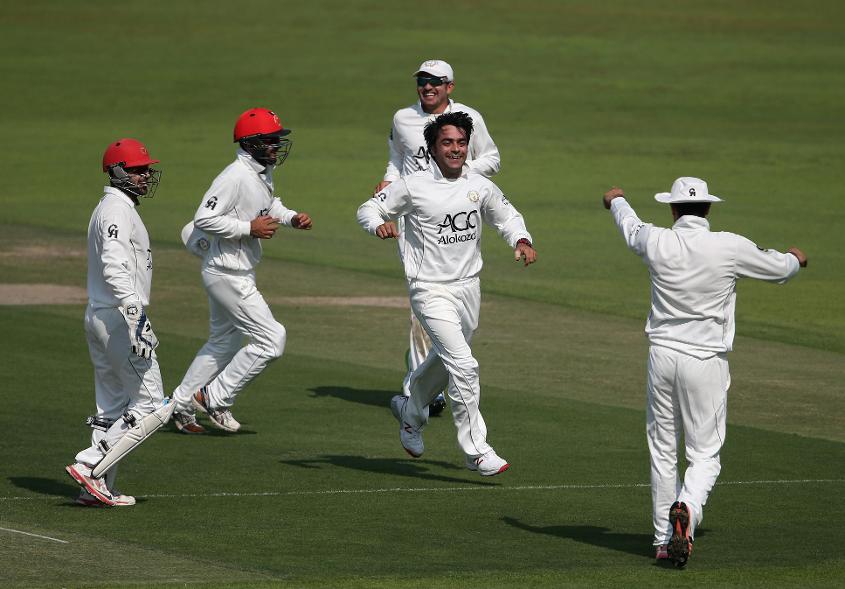
It’s fourteen years since Dave Richardson, then ICC general manager, floated an imaginative scheme for a three-tier, 20-team structure for Test cricket.
There would be an eight-team Test championship, with two divisions of six teams below it and with challenge-match-based promotion and relegation between the three divisions.
Such radicalism was, of course, doomed, but out of Richardson’s scheme came the Intercontinental Cup, the first-class competition between the leading Associates which flourished for fifteen years and has now been cut loose by the ICC.
Twelve years later Richardson, by now ICC Chief Executive and who may in due course prove to have been one of cricket’s most creative, if ultimately unsuccessful, thinkers, was promoting the idea of ‘a proper league system which will grow interest and make every series more relevant,’ with two divisions of seven and five teams respectively and some form of promotion and relegation.
That, too, was too ambitious for Richardson’s masters, and we have wound up with the present mess of twelve-team Test rankings, nine teams playing for a Test championship and the other three consigned to a sort of lean-to structure, an arrangement which had as much to do with relegating Zimbabwe as with elevating Ireland and Afghanistan.

Much of the explanation, no doubt, lies in the money, in the intransigent desire of cricket’s warlords to maximise their countries’ share of the game’s available resources, at the expense of those with little power and influence, but there are other, subtler factors at work as well.
And one of those is the strange, almost mystical quality which adheres to the term ‘Test cricket’.
It was not always so: the origins of the term are not entirely clear, but it is evident that the very first Test matches were not so called at the time, and that that tell-tale capital-T took some years to attach itself to the description of a match between England and Australia, or a little later, between either of those countries and South Africa.
No-one seems ever to have considered applying the term to the matches between Canada and the USA, which long pre-dated the rivalry of England and Australia.
Then the three Test countries set up the Imperial Cricket Conference, and Test status became inseparable from membership of that august body.
Even then, it lacked some of the mystique it has since acquired – how, otherwise, would it have been possible for England to be playing two Tests simultaneously, in the West Indies and New Zealand, in January and February 1930?
Test matches have been played over three, four, five, six and unlimited numbers of days, on matting wickets as well as turf.

The hypocrisy of the official definition of a Test was exposed in 1961, when South Africa left the Commonwealth and thereby lost its right to membership of the ICC, and Australia, England and New Zealand announced that they would continue to regard their matches against the South Africans as Tests.
And over the next four decades, as cricket’s balance of power shifted inexorably towards the BCCI and its allies, the expansion of Test status to include Sri Lanka, Zimbabwe and, ultimately but prematurely, Bangladesh had much more to do with the building of political alliances than some magical quality or bundle of qualities.
So we should be profoundly sceptical about the allegedly sacrosanct shibboleth of ‘Test status’, because it has regularly been used to fit the prejudices and serve the interests of whoever is currently playing St Peter and keeping the gate of cricket’s supposed Paradise.
Maybe it’s even time to abandon the term altogether.
Why should we not think about Multi-Day Internationals, alongside One-Day Internationals and Twenty20 Internationals?
And if all 104 ICC members are allowed to play T20Is, if any match between full sides representing any two of those members counts as a T20I, why should that not apply to ODIs and MDIs as well?
The answer to that question is coloured, perhaps, more by financial and political considerations than by anything else.
The reason the ICC ditched the Intercontinental Cup was the cost of running an international four-day competition, and the Council’s iniquitous funding arrangements ensure that even the least impoverished of the Associates are scarcely in a position to fund it themselves.
READ MORE: THE INTERCONTINENTAL CUP MUST NOT DIE
While the link between Full membership and Test status has now been broken, moreover, it has so far been seen only as meaning that it will now be possible to become a Full member without gaining Test status, and not that it will be possible to play Test cricket without threatening the political foundations of world cricket by acquiring voting rights as a Full member.
But if we forget about the supposedly mystical character of Test status and simply think in terms of MDIs, then a three- or four-day match between, say, Scotland and the Netherlands, or Kenya and Uganda, or, for that matter, between Papua New Guinea and New Zealand, could have the same significance as one between Ireland and Zimbabwe – or Sri Lanka and Pakistan.
Some will scream that statistics will become meaningless, but as long as Ranji Trophy statistics treat as equal performances against Gujarat and Uttarakhand, or Karnataka and Arunachal Pradesh, it’s hard to see that that argument has any force.
The possible implications of such a radical move for the position of the established MDI countries are, of course, a separate matter; Dave Richardson’s dreams of separate divisions of Test nations foundered on the unwillingness of the Great Ones even to contemplate the possibility of relegation, but the structure of any MDI championship is a separate question from what should constitute a full international match.
Which Associate members decided to go down the MDI route, and the extent to which they did so, would naturally depend upon their resources (and thus upon any healing of the running sore that is the ICC funding model), and upon the priority they accorded to the longer format.
But there is a huge argument in favour of giving that a higher priority, given the importance of longer formats in the development of young cricketers.
And that, finally, is what should matter most to anyone who claims to have the global interests of cricket at heart.
You’re reading Emerging Cricket — brought to you by a passionate group of volunteers with a vision for cricket to be a truly global sport, and a mission to inspire passion to grow the game.
Be sure to check out our homepage for all the latest news, please subscribe for regular updates, and follow EC on Twitter, Facebook, LinkedIn and YouTube.
Don’t know where to start? Check out our features list, country profiles, and subscribe to our podcast.
Support us from US$2 a month — and get exclusive benefits, by becoming an EC Patron.






